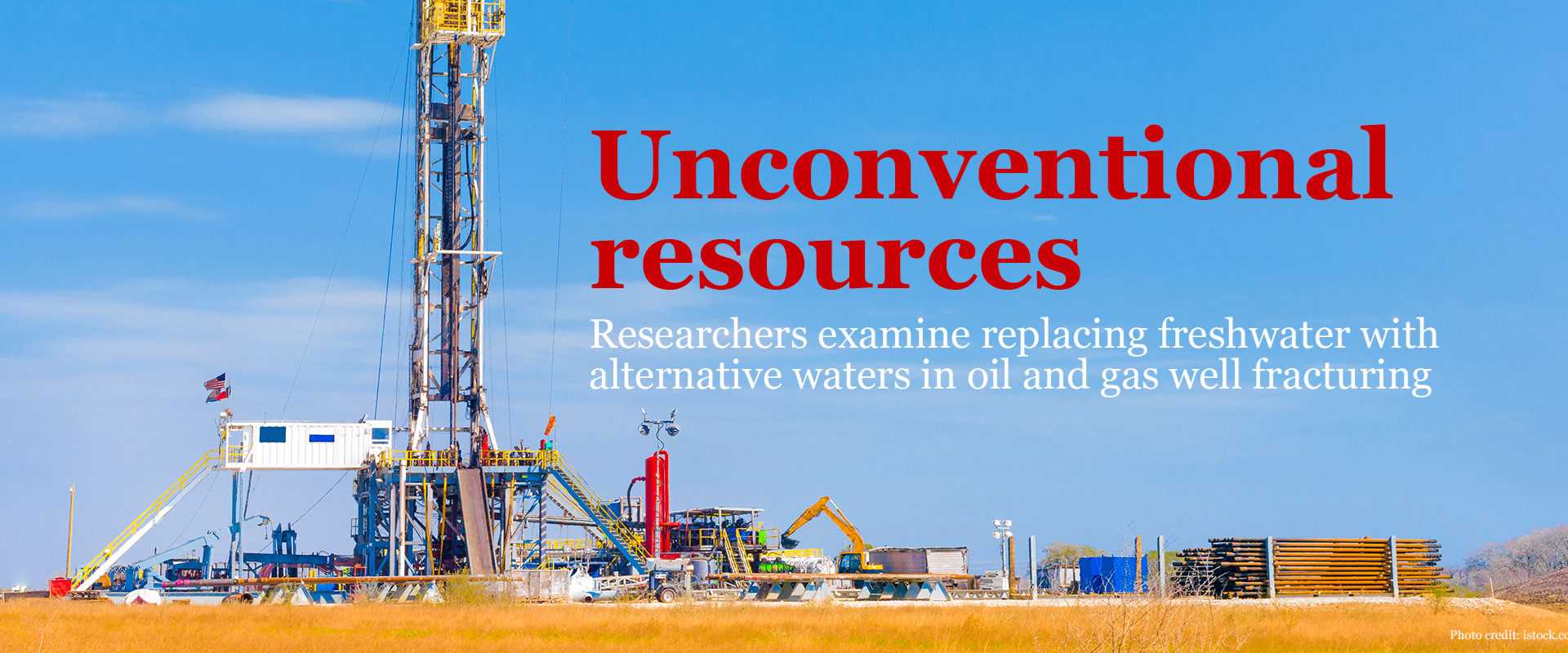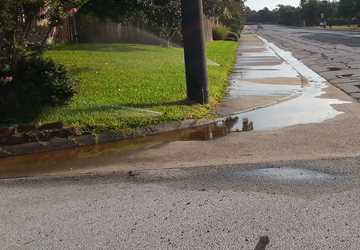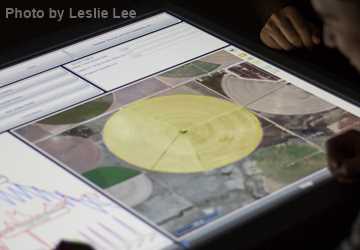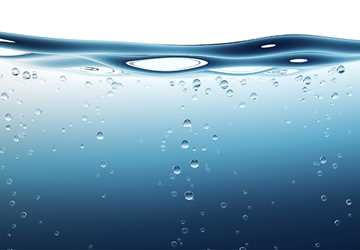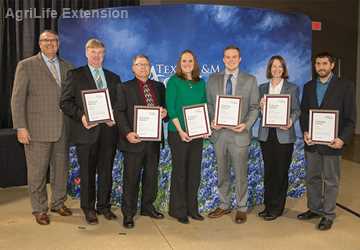Fueled by the use of hydraulic fracturing combined with horizontal drilling to extract oil and gas, the Eagle Ford Shale in South Texas in recent years became one of the most prolific oil and gas plays in the country. As more and more wells were drilled, however, concerns grew that freshwater use for hydraulic fracturing would drain South Texas communities of water needed for municipal and agricultural use.
In a recent study, a group of Texas A&M University petroleum engineering researchers and Texas A&M AgriLife Extension Service and Texas A&M AgriLife Research personnel set out to determine if brackish and saline waters from the Carrizo-Wilcox Aquifer and produced waters recovered from oil and gas wells could replace freshwater in hydraulic fracture fluids, saving the valuable freshwater for other uses.
Hydraulic fracturing uses water and other fluids under pressure to fracture, or crack, the tight shale rock, providing pathways for oil and gas to flow to the well. Produced water is the used fracturing fluid that flows back to the surface after hydraulic fracturing is complete.
Like most aquifers, the Carrizo-Wilcox not only contains freshwater but brackish and saline waters as well. Brackish water is salty water that typically contains total dissolved solids in concentrations ranging from 1,000 to 10,000 milligrams per liter; saline water has more than 10,000 milligrams per liter of total dissolved solids.
The researchers’ goals were to quantify the volumes of brackish and saline waters in the portion of the Carrizo-Wilcox that overlies the Eagle Ford Shale, determine the compatibility of those waters and produced waters as source waters for hydraulic fracture fluids, and verify the economics of using those waters instead of freshwater, said Dr. Walter Ayers, visiting professor in the Texas A&M Harold Vance Department of Petroleum Engineering.
No one had adequately described the quantity and quality of brackish and saline waters in the Carrizo-Wilcox, Ayers said; previous studies had focused mainly on freshwater.
Why the concern?
Even before the recent oil and gas boom, water was limited in South Texas, with most water supplies pumped from the Carrizo-Wilcox.
“In the Eagle Ford Shale, the oil and gas industry uses about 5 million gallons of freshwater-based fracture fluid per well,” said Dr. Duane McVay, Albert B. Stevens Chair professor in petroleum engineering. With ultimately 34,500 or more wells anticipated for the Eagle Ford Shale, that adds up to about 500,000 acre-feet of water.
We wanted to demonstrate to the oil and gas industry that they have an abundant supply of brackish and saline waters in the Carrizo-Wilcox Aquifer to use in fracture stimulation of wells, and they do not have to use potable water.
If the researchers could quantify how much compatible brackish and saline water in the Carrizo-Wilcox could be used for fracturing instead of freshwater, then they could quantify how much freshwater could be conserved for other uses, such as irrigation and drinking.
“We wanted to demonstrate to the oil and gas industry that they have an abundant supply of brackish and saline waters in the Carrizo-Wilcox Aquifer to use in fracture stimulation of wells, and they do not have to use potable water,” Ayers said.
Unique mapping methodology
The researchers began by mapping the Carrizo-Wilcox, dividing the aquifer into four layers: the Carrizo, and the upper, middle and lower Wilcox units. They also divided the land area into eight different regions, based on geological properties and oil and gas fluid properties.
They used oil and gas well logs and Texas Water Development Board data to calculate the volumes of brackish and saline waters as well as to map their salinity and chemical composition.
“What we did had not been done before,” Ayers said. “We applied different techniques that allowed us to extend mapping further to the southeast, beyond the shallower freshwater, to characterize the Carrizo-Wilcox Aquifer where it contains brackish and saline water.”
The team used electrical resistivity logs integrated with published water composition data to identify different water compositions within the aquifer for each of the eight regions. In each aquifer region, there is a different electrical resistivity response because of differences in the water’s composition and concentration of ions. The resistivity indicates the water’s salinity.
The results were encouraging.
Even if we use only 1 percent of the water in place, it greatly exceeds what is needed.
“The volumes of recoverable brackish and saline waters exceed the anticipated need for all future fracture stimulation operations in the Eagle Ford,” Ayers said. “Even if we use only 1 percent of the water in place, it greatly exceeds what is needed.”
For instance, in one region, the researchers found that the water demand for hydraulic fracturing would be about 5,000 acre-feet over the remaining life of the play, while the amount of recoverable brackish water in the Carrizo was 70,000 acre-feet and in the upper Wilcox 21,000 acre-feet, more than enough to meet the industry’s needs.
They also determined that water wells’ flow rates would support the amount of water delivery needed for fracture stimulation.
Testing compatibility
In another part of the project, the researchers determined the chemical specifications needed for waters to meet fracture fluid requirements and then assessed the compatibility of the brackish and saline aquifer waters as well as the produced waters.
Because chemical compositions of the waters vary throughout the eight areas, it is important to know their compositions, since different ions, such as sulfate, calcium and others, in high enough concentrations can cause problems with the different chemicals used in fracture fluids.
Their research showed that the compositions of most of the Carrizo-Wilcox waters did not significantly affect performance of fracture fluids and are compatible with fracturing.
Economics of using brackish, saline waters
The researchers also built an economic model of a centralized water management system to determine the economics of using brackish, saline and produced waters in hydraulic fracturing. All water management costs associated with hydraulic fracturing over the span of field development were included in the analysis, such as acquisition, transportation, storage, disposal and treatment.
Using brackish and saline aquifer waters as source water in hydraulic fracturing operations was found to be economically feasible, in part, because of the close proximity of those waters to current and future Eagle Ford development.
“Increasing the fractions of brackish, saline and produced waters used in fracture fluids reduces fracturing water costs,” McVay said. “We demonstrated that the cost is less than using freshwater, so that gives operators some incentives.”
Study’s usefulness
McVay said the researchers hope their study will encourage oil and gas operators to consider using more brackish and saline waters instead of freshwater in fracturing operations.
Although it is easier for operators to use freshwater, this study shows that costly water is rarely needed to make Carrizo-Wilcox brackish and saline waters and Eagle Ford produced waters compatible unless higher fractions of saline and produced waters are used instead of the lower saline brackish waters.
Increasing the fractions of brackish, saline and produced waters used in fracture fluids reduces fracturing water costs.
To communicate the study’s outcomes to South Texas landowners, Monty Dozier, AgriLife Extension regional program leader, has spoken to landowners and AgriLife Extension agents at different venues. The investigators will present their findings at a national meeting. Eventually they will publish an extensive report and make it available to interested companies.
“It’s a paradigm shift on the part of operators when they can read these research results and see that it is in their best economic interests to use brackish or saline waters,” Ayers said. “Although some are already doing that, I think it will bring others around to this thinking.”
This project was funded by a joint Texas A&M AgriLife Research, Texas A&M Engineering Experiment Station and Texas A&M AgriLife Extension Service Water Seed Grant: Creation and Deployment of Water-Use Efficient Technology Platforms. In 2013, the Texas Legislature charged the agencies to address the critical nexus for water-use efficiency as part of addressing the future water needs of Texas.
Explore this Issue
Authors
As the former communications manager for TWRI, Kathy Wythe provided leadership for the institute's communications, including a magazine, newsletters, brochures, social media, media relations and special projects.

